1933
The name refers to the New Deal, a set of changes and public works projects undertaken by President Franklin D. Roosevelt in 1933–1935 in response to the Great Depression in the United States. The Green New Deal combines Roosevelt's economic approach with modern ideas such as renewable energy and resource efficiency. Since the early 2000s, especially since 2018, proposals for a "Green New Deal" have arisen in Europe, the United States, and other parts of the world.
2006
In 2006, a Green New Deal was created by the Green New Deal Task Force as a plan for one hundred percent clean, renewable energy by 2030 utilizing a carbon tax, a jobs guarantee, free college, single-payer healthcare, and a focus on using public programs.
2007
After the Green New Deal idea was proposed by Thomas Friedman in 2007 and developed by the British Green New Deal Group, a plan for an international green new deal was advanced by the United Nations. On October 22, 2008, UNEP's Executive Director Achim Steiner unveiled a Global Green New Deal initiative as a response to the Great Recession, aiming to create jobs in "green" industries, thus boosting the world economy and curbing climate change at the same time. The UN continued to promote the global green new deal into 2009 both to the G20 and its wider membership. The International green new deal was also supported by Gordon Brown. Yet despite the success of Brown and others in bringing about a short lived worldwide return to Keynesian stimulus policies, the focus of extra government spending was on supporting existing economic activity, rather than speeding the transition to the green economy. In 2019, United Nations officials and others once again called for a global green new deal. In July 2021, the Global Alliance for a Green New Deal was launched, a group of politicians from around the world campaigning for an international Green New Deal.
January 2007
An early use of the phrase "Green New Deal" was by journalist Thomas Friedman. He argued in favor of the idea in The New York Times and The New York Times Magazine. In January 2007, Friedman wrote:.mw-parser-output .templatequote{overflow:hidden;margin:1em 0;padding:0 32px}.mw-parser-output .templatequotecite{line-height:1.5em;text-align:left;margin-top:0}@media(min-width:500px){.mw-parser-output .templatequotecite{padding-left:1.6em}}
2008
In the UK, the Green New Deal Group and the New Economics Foundation produced the A Green New Deal report asking for a Green New Deal as a way out of the Great Recession, demanding a reform of the financial and tax sectors and a revolution of the energy sector in the country. Also, Green MP for Brighton Pavilion, Caroline Lucas, raised the idea during an economic debate in 2008.
July 21, 2008
Friedman expanded upon the idea in his September 2008 book Hot, Flat, and Crowded. This approach was taken up in Britain by the Green New Deal Group, which published its eponymous report on July 21, 2008. The concept was further popularized and put on a wider footing when the United Nations Environment Programme (UNEP) began to promote it internationally.
2009
Economist Edward Barbier, who developed the "Global Green New Deal" proposal for the United Nations Environment Programme in 2009, opposes "a massive federal jobs program," saying "The government would end up doing more and more of what the private sector and industry should be doing." Barbier prefers carbon pricing, such as a carbon tax or cap-and-trade system, in order to "address distortions in the economy that are holding back private sector innovation and investments in clean energy."
2009
In 2009, the economist Edward Barbier authored the United Nations’ Global Green New Deal, which was a strategy for greening the global economic recovery after the Great Recession. He further elaborated on this strategy in a 2010 book.
2009
The Australian Greens have advocated for a "Green Plan", similar to the Green New Deal, since 2009. Deputy Leader Christine Milne discussed the idea on the ABC's panel discussion program Q&A on February 19, 2009, and it was the subject of a major national conference of the Australian Greens in 2009.
2010
The first U.S. politician to run on a Green New Deal platform was Howie Hawkins of the Green Party when he ran for governor of New York in 2010. In her 2012 campaign, Green Party presidential candidate Jill Stein became the first presidential candidate to run on a Green New Deal platform and has continued to do so in each of her campaigns since then.
2010
Since 2006, the Green New Deal has been included in the platforms of multiple Green Party candidates, such as Howie Hawkins' gubernatorial campaigns in 2010, 2014, and 2018, and Jill Stein's 2012 and 2016 presidential campaigns.
2012
The Green Party of the United States and Green Party presidential candidate Jill Stein proposed a "Green New Deal" beginning in 2012. A Green New Deal remains officially part of the platform of the Green Party of the United States.
2018
A "Green New Deal" wing began to emerge in the Democratic Party after the November 2018 elections. A possible program in 2018 for a "Green New Deal" assembled by the think tank Data for Progress was described as "pairing labor programs with measures to combat the climate crisis."
November 2018
A November 2018 article in Vogue stated, "There isn't just one Green New Deal yet. For now, it's a platform position that some candidates are taking to indicate that they want the American government to devote the country to preparing for climate change as fully as Franklin Delano Roosevelt once did to reinvigorating the economy after the Great Depression."
December 10, 2018
A Sunrise Movement protest on behalf of a Green New Deal at the Capitol Hill offices of Nancy Pelosi and Steny Hoyer on December 10, 2018 featured Lennox Yearwood and speakers as young as age 7, resulting in 143 arrests. Euronews, the pan-European TV network, displayed video of youth with signs saying "Green New Deal," "No excuses", and "Do your job" in its "No Comment" section.
December 14, 2018
On December 14, 2018, a group of over 300 local elected officials from 40 states issued a letter endorsing a Green New Deal approach. That same day, a poll released by Yale Program on Climate Change Communication indicated that although 82% of registered voters had not heard of the "Green New Deal," it had strong bi-partisan support among voters. A non-partisan description of the general concepts behind a Green New Deal resulted in 40% of respondents saying they "strongly support", and 41% saying they "somewhat support" the idea.
January 10, 2019
On January 10, 2019, a letter signed by 626 organizations in support of a Green New Deal was sent to all members of Congress. It called for measures such as "an expansion of the Clean Air Act; a ban on crude oil exports; an end to fossil fuel subsidies and fossil fuel leasing; and a phase-out of all gasoline-powered vehicles by 2040."
January 10, 2019
On January 10, 2019, over 600 organizations submitted a letter to Congress declaring support for policies to reduce greenhouse gas emissions. This includes phasing out fossil fuel extraction and ending fossil fuel subsidies, transitioning to 100% clean renewable energy by 2035, expanding public transportation, and strict emission reductions rather than reliance on carbon emission trading.
February 2019
In late 2018/ early 2019, a series of extreme weather events led to the official "rebirth" of the Green New Deal, reflecting the sense of urgency that reverberated throughout the global population that struggled with addressing the consequences of climate change. The Green New Deal can be considered a product of a broader shift towards environmentalism and action against climate change. According to historian and urban policy specialist Jon Bloomfield, "the Green New Deal was reborn in February 2019 as a package of proposed US legislation linking radical environmental and economic programmes, presented by Democrats Alexandria Ocasio-Cortez and Edward Markey."
February 07, 2019
On February 7, 2019, Representative Alexandria Ocasio-Cortez and Senator Edward Markey released a fourteen-page resolution for their Green New Deal (House Resolution 109, closely related to S. Res. 59). Their proposal advocated transitioning the United States to 100% renewable, zero-emission energy sources, along with investment in electric cars and high-speed rail systems, and implementing the "social cost of carbon" that had been part of the Obama administration's plan for addressing climate change within 10 years. Besides increasing state-sponsored jobs, this Green New Deal also sought to address poverty by aiming much of the improvements in "frontline and vulnerable communities" which include poor and disadvantaged people. The resolution included calls for universal health care, increased minimum wages, and preventing monopolies.
February 11, 2019
According to The Washington Post (February 11, 2019), the resolution called for a "10-year national mobilization" whose primary goals would be:
March 2019
In March 2019, Labour Party members launched a grassroots campaign called Labour for a Green New Deal. The aim of the group is to push the party to adopt a radical Green New Deal to transform the UK economy, tackle inequality and address the escalating climate crisis. It also wants a region-specific green jobs guarantee, a significant expansion of public ownership and democratic control of industry, as well as mass investment in public infrastructure. The group states that they got their inspiration from the Sunrise Movement and the work that congresswoman Alexandria Ocasio-Cortez has done in the US. Group members have met with Zack Exley, co-founder of the progressive group Justice Democrats, to learn from the experiences that he and Ocasio-Cortez have had in working for the Green New Deal campaign in the US.
May 2019
In early May 2019, with rising concerns about the need for urgent global environmental action to reduce potentially catastrophic effects of climate change, a non-partisan coalition of nearly 70 groups launched the Pact for a Green New Deal (New Deal vert au Canada in French). With press conferences in Montreal, Toronto, and Vancouver, the coalition called for fossil fuel emissions to be halved by 2030. On May 16, 2019 the Green Party released a 5-page summary of their plan entitled "Mission: Possible: The Green Climate Action Plan".
September 2019
In September 2019, Naomi Klein published On Fire: The (Burning) Case for a Green New Deal. On Fire is a collection of essays focusing on climate change and the urgent actions needed to preserve the planet. Klein relates her meeting with Greta Thunberg in the opening essay in which she discusses the entrance of young people into those speaking out for climate awareness and change. She supports the Green New Deal throughout the book and in the final essay she discusses the 2020 U.S. election saying "The stakes of the election are almost unbearably high. It's why I wrote the book and decided to put it out now and why I'll be doing whatever I can to help push people toward supporting a candidate with the most ambitious Green New Deal platform—so that they win the primaries and then the general."
September 2019
In September 2019, the Labour party committed to a Green New Deal at its 2019 annual conference. This included a target to decarbonise by 2030. Polling undertook by YouGov in late October 2019 found that 56% of British adults support the goal of making the UK carbon neutral by 2030 or earlier.
October 2019
By 2019, international calls for a Green New Deal had already become more prominent. This reflected the popular support the GND had received in the US in late 2018, growing recognition of the global warming threat resulting from recent extreme weather events, the Greta effect and the IPCC 1.5 °C report. In addition to activity within conventional national & multilateral politics, there has been support for a Green New Deal within city diplomacy. In October 2019, the C40 committed to supporting a Global Green New Deal, announcing there will be determined action from all its 94 cities, with 30 cities having already peaked their emissions and progressing rapidly towards net-zero.
December 2019
On continental Europe, the European Spring coalition campaigned under the banner of a "Green New Deal" for the 2019 EU elections. In December 2019, the newly elected European Commission under Von der Leyen presented a set of policy proposals under the name European Green Deal. Compared to the United States plan, it has a less ambitious decarbonisation timeline, with an aim of carbon neutrality in 2050. The policy proposal involves every sector in the economy and the option of a border adjustment mechanism, a 'carbon tariff', is on the table to prevent carbon leakage from outside countries.
2020
In 2020, after the Democratic Party won an absolute majority in the National Assembly, the leadership of the country began to advance a Green New Deal. It includes:
January 2020
A prominent 2019 attempt to get legislation passed for a Green New Deal was sponsored by Rep. Alexandria Ocasio-Cortez (D-NY) and Sen. Ed Markey (D-MA) during the 116th United States Congress, though it failed to advance in the Senate. In the European Union, a 2019 proposal from the European Commission for a European Green Deal was supported by the European Council and, in January 2020, by the European Parliament as well.
April 2020
In April 2020 the European Parliament called to include the European Green Deal in the recovery program from the COVID-19 pandemic.
July 2020
In July 2020, while the UK government promised a "green recovery" from the COVID-19 pandemic, this was criticised as being insufficient, and lacking changes to regulation that enabled coal, oil, and gas pollution to continue. An alternative "Green Recovery Act", widely endorsed by politicians and the media, was published by an academic and think tank group that would target nine fields of law reform, on transport, energy generation, agriculture, fossil fuels, local government, international agreement, finance and corporate governance, employment, and investment. This has the goal of establishing duties on all public bodies and regulators to end use of all coal, oil and gas "as fast as technologically practicable", with strict exceptions if there are not yet technical alternatives.
July 08, 2020
Democratic Party presidential candidate and president-elect Joe Biden has declined to endorse the full Green New Deal plan proposed by members of his party, but he has promised to increase generation of renewable energy, transition to more energy efficient buildings and increase fuel efficiency standards for automobiles. The joint policy proposals developed by the Biden and Sanders campaigns, which were released on July 8, 2020, do not include a Green New Deal.
December 2020
There were further proposals to include a GND, both in the US and internationally, in the recovery program for the COVID-19 pandemic. In December 2020, however, the United Nations released a report saying that a high proportion of the world's COVID-19 recovery stimulus was not going towards clean energy. UN secretary-general António Guterres declared the world's governments were "doubling down" on fossil fuels. As of 2021, commentators such as the Council on Foreign Relations have noted that in addition to climate-friendly policies being enacted in the U.S. by Joe Biden, other major economies such as China, India, and the European Union have also begun "implementing some of the policies envisioned by the Green New Deal."
2021
In 2021, commentators noted that early climate-related executive actions by President Biden, such as re-joining the Paris Agreement, have much in common with the 2019 GND proposed by Rep. Ocasio-Cortez and Sen. Markey. According to Mike Krancer, while he sees the Biden Plan For A Clean Energy Revolution And Environmental Justice and the 2019 proposal as very similar, a key difference is that the Biden plan includes a prominent role for carbon capture and storage technology. President Biden's infrastructure package, which pledges to halve 2005 U.S. greenhouse gas emissions levels by 2030, has been criticized by progressives, including Rep. Ocasio-Cortez, as not being ambitious enough to achieve the scale required to mitigate climate change. Biden's climate plan is incorporated in his American Jobs Plan and American Families Plan, which would in part lead to the creation of a Civilian Climate Corps modeled after the Civilian Conservation Corps.
April 2021
In April 2021, The Red Nation Indigenous advocacy group released the Red Deal. The Red Deal is a proposal designed to supplement the Green New Deal, and incorporates a range of anti-capitalism and Indigenous decolonisation proposals designed to halt climate change.
April 20, 2021
On April 20, 2021, Rep. Ocasio-Cortez, Sen. Markey and fellow Democratic lawmakers reintroduced the Green New Deal Resolution at the National Mall. The resolution reaffirms the threat produced by climate change and the responsibility of the US to recommit to meeting the emission goals outlined by the Intergovernmental Panel on Climate Change.
July 2021
In July 2021, the European Commission released its "Fit for 55" legislation package, which contains important guidelines for the future of the automotive industry; all new cars on the European market must be zero-emission vehicles from 2035. According to European Commissioner for Climate Action Frans Timmermans, "the best answer" to the 2021 global energy crisis is "to reduce our reliance on fossil fuels."
August 2022
In August 2022, Congress adopted the Inflation Reduction Act (IRA) in order to invest in energy security, clean energy, and affordable healthcare. According to Guri Bang of Norwegian University of Life Sciences, the IRA is structured to utilize economic incentives rather than the implementation of regulatory policies in order to combine economic and climate related policies. The IRA allocates $369 billion in public spending for over 50 programs aimed at reducing greenhouse gas emissions by approximately 40% from 2005 levels by 2030 in the US. In order to address congressional opposition, the implementation of the IRA involved compromise such as the inclusion of leases for fossil fuel extraction.
August 2022
In August 2022, President Joe Biden signed into law the Inflation Reduction Act, which contains the largest climate investment by the U.S. federal government in history.
January 20, 2025
However, on January 20, 2025, President Donald Trump signed Executive Order 14154, “Unleashing American Energy” which includes the revocation of the Inflation Reduction Act and the Green New Deal in sections 4 and 7. There is current uncertainty as to how this will be implemented, how this will impact the funding of clean energy initiatives such as the Green New Deal, and the implications of this Executive Order on the renewable energy sector. The administration has publicly denounced efforts related to environmental justice investments and decarbonization due to an increasing push for domestic energy expansion, limiting the implementation of efforts under the Green New Deal. The expansion of domestic fossil fuel development and rollbacks of environmental protections contradict the efforts of the Green New Deal.
Early 2025
In early 2008, author Jeff Biggers launched a series of challenges for a Green New Deal from the perspective of his writings from coal country in Appalachia. Biggers wrote that then-presidential-candidate Obama "should shatter these artificial racial boundaries by proposing a New 'Green' Deal to revamp the region and bridge a growing chasm between bitterly divided Democrats, and call for an end to mountaintop removal policies that have led to impoverishment and ruin in the coal fields." Biggers followed up with other Green New Deal proposals over the next four years. While the discussion of the Green New Deal was relevant and widespread during this time, there were limitations to fully implementing it within the context of the Obama campaign. The framework of this initiative was weak, and primarily existed as a response to growing concern surrounding the climate crisis that had been accelerated due to increased reliance on fossil fuel extraction and consumption. .mw-parser-output .smooth-pie{display:none;position:relative;width:100px;height:100px;border-radius:50%;background-color:#333;color:black;border:1px solid black}.mw-parser-output .smooth-pie div{position:absolute;transform-origin:left bottom;background-color:#655;color:black;top:0;left:50%;width:50%;height:50%;border-radius:0 500%0 0}.mw-parser-output .smooth-pie div.pie50{transform-origin:left center;height:100%;border-radius:0 100%100%0/50%}.mw-parser-output .smooth-pie .pie12-5{clip-path:polygon(0%0%,100%0%,0 100%)}.mw-parser-output .smooth-pie .pie5{clip-path:polygon(0%0%,32.49197%0%,0 100%)}.mw-parser-output .smooth-pie .pie7{clip-path:polygon(0%0%,47.056428%0%,0 100%)}.mw-parser-output .smooth-pie .pie1{clip-path:polygon(0%0%,6.2914667%0%,0 100%)}.mw-parser-output .smooth-pie div.smooth-pie-border{display:none}@supports(clip-path:circle(50%)){.mw-parser-output .smooth-pie{display:block}}.mw-parser-output .smooth-pie-container{display:flex;align-items:flex-start;gap:1em;flex-wrap:wrap}.mw-parser-output .smooth-pie-legend{list-style-type:none!important;margin:0!important;padding:0!important}.mw-parser-output .smooth-pie-legend>li{display:flex;align-items:baseline;gap:.5em;margin:0;margin-bottom:0.1em}.mw-parser-output .smooth-pie-legend>li>span{display:block;box-sizing:border-box}.mw-parser-output .smooth-pie-legend>li>.l-color{border:1px solid var(--color-base,black);width:.8em;height:.8em;flex-shrink:0}.mw-parser-output .pie-thumb .smooth-pie-container{padding:.5em;padding-bottom:0;text-align:left}.mw-parser-output .pie-thumb .smooth-pie-caption{margin-bottom:1em;font-size:94%}.mw-parser-output .thumbinner>.smooth-pie-container{flex-direction:column-reverse}@media screen and (min-width:641px){.mw-parser-output .thumbinner>.smooth-pie-container{width:min-content}}@media print{.mw-parser-output .smooth-pie-container{break-inside:avoid-page}}body.mw-mf .mw-parser-output .thumbinner .smooth-pie-container{align-items:center}body.mw-mf .mw-parser-output .thumbinner .smooth-pie-legend-container{font-size:0.8125rem;line-height:1.5;color:var(--color-subtle,#54595d)}@media screen and (max-width:640px){.mw-parser-output .thumbinner .smooth-pie-legend{display:grid;grid-template-columns:repeat(auto-fill,minmax(190px,1fr));gap:0.3em}.mw-parser-output .thumbinner .smooth-pie-footer{margin-top:.5em}}
Late 2025
Various perspectives emerged in late 2018 as to whether to form a committee dedicated to climate, what powers such a committee might be granted, and whether the committee would be specifically tasked with developing a Green New Deal.
Early 2025
By the end of November, eighteen Democratic members of Congress were co-sponsoring a proposed House Select Committee on a Green New Deal, and incoming representatives Ayanna Pressley and Joe Neguse had announced their support. Draft text would task this committee with a "'detailed national, industrial, economic mobilization plan' capable of making the U.S. economy 'carbon neutral' while promoting 'economic and environmental justice and equality,'" to be released in early 2020, with draft legislation for implementation within 90 days.
Trending
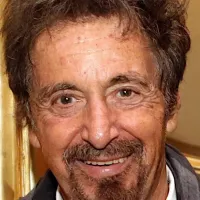
2 months ago Al Pacino's Emotional Vatican Meeting: Presents Pope Leo XIV with Maserati Model
Molly Gordon is an American actress screenwriter and director known for her work in both comedy films and television series...
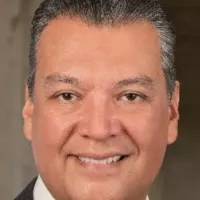
Alex Padilla is a prominent American politician and a member of the Democratic Party He currently serves as the senior...
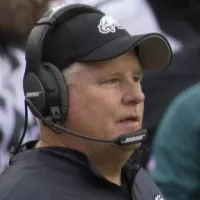
Chip Kelly is a prominent figure in American football recognized for his offensive coaching prowess He rose to fame as...
Andrea Bargnani is a retired Italian professional basketball player A -foot power forward-center he played professionally in Italy before being...

18 days ago WNBA All-Stars advocate pay equity; GloRilla performs at All-Star halftime show.
Popular

Jupiter is the fifth and largest planet from the Sun...
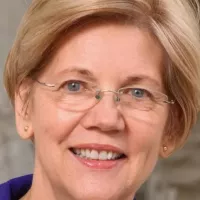
Elizabeth Warren is a prominent American politician and the senior...

Chuck Schumer is the senior United States Senator from New...

Candace Owens is an American political commentator and author known...
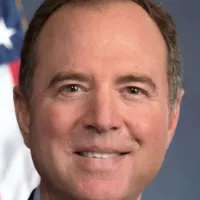
Adam Schiff is an American politician and lawyer currently serving...

Mark Jankowski is a Canadian professional ice hockey centre currently...